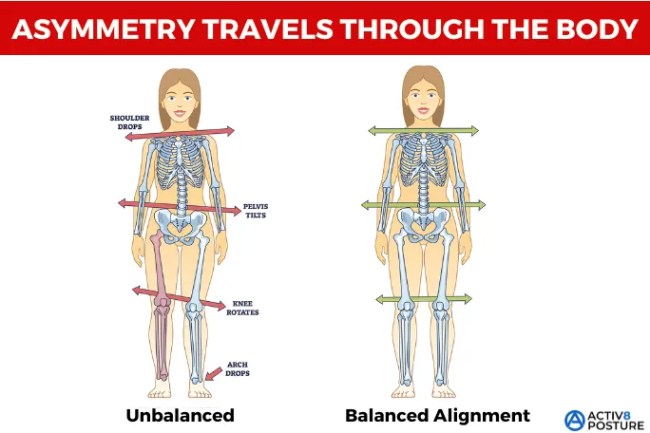Walking asymmetry refers to quantifiable differences in gait parameters between the left and right sides of the body during locomotion. It signifies an imbalance or unevenness in how an individual walks, deviating from a perfectly symmetrical gait pattern where both limbs perform identically.
Characteristics of Walking Asymmetry
Asymmetry can manifest in various aspects of the gait cycle. Common parameters where discrepancies are observed include:
- Temporal parameters: Differences in stance time, swing time, step time, or stride time between the left and right leg.
- Spatial parameters: Unequal step length, stride length, or step width.
- Kinematic parameters: Asymmetrical joint angles (hip, knee, ankle) during different phases of gait, or differences in segment trajectory.
- Kinetic parameters: Imbalances in ground reaction forces, joint moments, or power generation/absorption between limbs.
The degree of asymmetry can range from subtle, often undetectable by the naked eye, to pronounced and visually obvious.

Common Causes
Walking asymmetry can arise from a multitude of factors, broadly categorized as:
- Musculoskeletal issues: Injuries such as sprains, fractures, muscle weakness, or tendonitis. Structural abnormalities like limb length discrepancy or joint deformities (e.g., osteoarthritis, scoliosis) are also significant contributors.
- Neurological conditions: Conditions affecting motor control, sensation, or muscle tone, such as stroke (hemiparesis), Parkinson's disease, multiple sclerosis, cerebral palsy, or peripheral neuropathy.
- Pain: Antalgic gait, where an individual alters their walking pattern to minimize pain in an affected limb, is a common cause of asymmetry.
- Prosthetics or Orthotics: Individuals using artificial limbs or assistive devices may exhibit asymmetry due to the mechanical properties of the device or adaptation strategies.
- Age-related changes: While not universal, some degree of asymmetry can develop with aging due to cumulative wear and tear or subclinical pathologies.
- Habitual factors: Long-term preferential use of one limb, although usually less significant, can contribute to minor asymmetries.
Significance and Implications
Walking asymmetry is clinically significant for several reasons:
- Indicator of pathology: It can be an early sign or a persistent symptom of an underlying medical condition.
- Increased risk of secondary issues: Chronic asymmetry can lead to compensatory movements, potentially overloading unaffected joints and tissues, increasing the risk of osteoarthritis, back pain, or other musculoskeletal problems.
- Reduced efficiency and increased fall risk: Asymmetrical gait can be less energy-efficient and may impair balance, thereby increasing the risk of falls, particularly in older adults or individuals with neurological impairments.
- Assessment of recovery: Monitoring changes in asymmetry can be a valuable tool in assessing the effectiveness of rehabilitation interventions following injury or surgery.
Quantifying walking asymmetry through methods like 3D motion capture, force plates, or wearable sensors provides objective data for diagnosis, treatment planning, and tracking progress in clinical and research settings.











